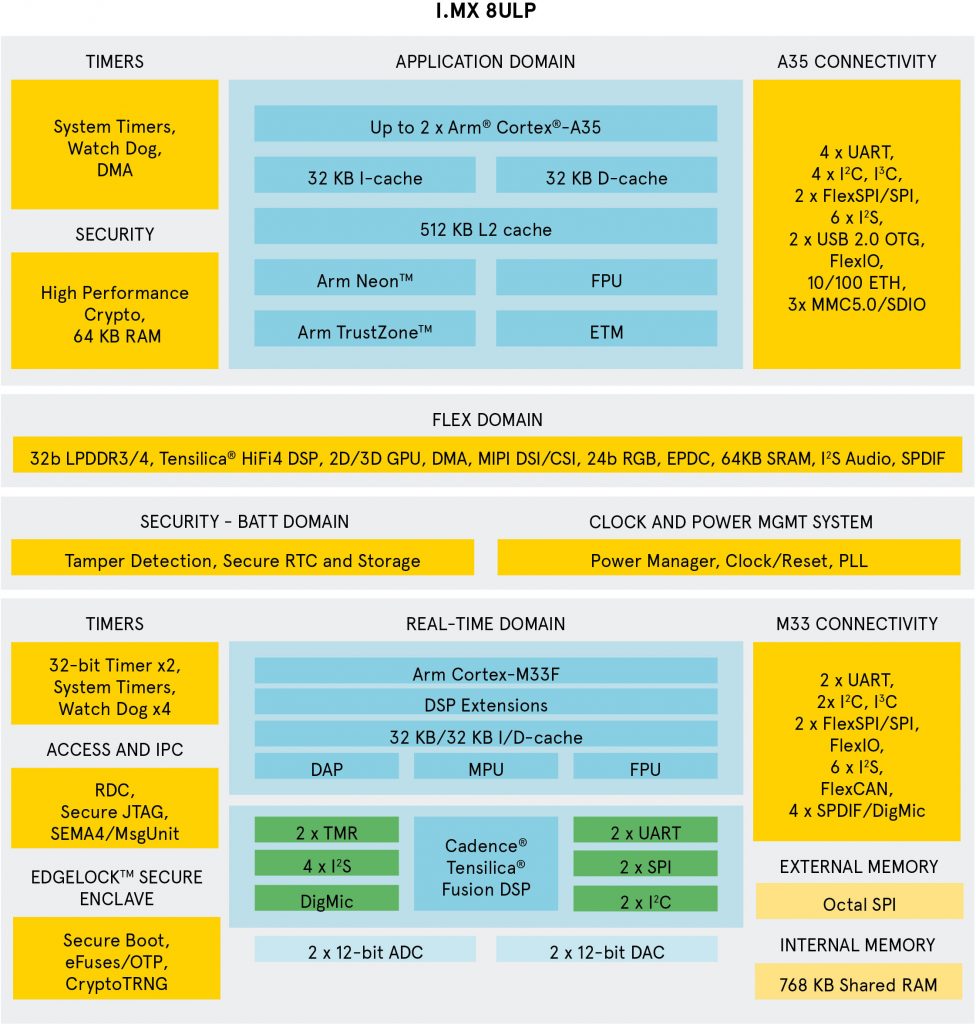Avnet Embedded's New Compact SMARC Module With Extreme Low Power Consumption
Long runtimes for battery-powered systems
Avnet Embedded has announced a scalable SMARC 2.1.1™ system-on-module family designed for extremely low power consumption combined with good computing performance.
The compact CPU boards are suitable for battery/solar-powered systems, IoT edge products, portable embedded controllers, handheld test and measurement devices, and mobile medical systems. The new power-efficient module generation is a further technology evolution step from microcontrollers (MCUs) to microprocessors (MPUs).
Energy efficiency and sustainability are playing an increasingly significant role in the development of electronic industrial products. Even though new embedded module families with ever more computing, graphics and video power and an extensive range of functions are introduced at regular intervals, there are still numerous industrial applications that require cost-optimized modules with extremely low power consumption together with good computing performance.

“The growing demand for compact embedded modules with low power consumption,” says Jens Plachetka, Manager Board Platforms, Avnet Embedded, “was the impetus for further expansion of our already extensive portfolio of compact SMARC 2.1.1 modules.”
The new scalable MSC SM2S-IMX8ULP system-on-module family bases on the brand new i.MX 8ULP crossover applications processor from NXP™ Semiconductor (Figure 1). The on-board used components and the design are optimized for extremely low power consumption combined with good computing performance.
Target markets for the MSC SM2S-IMX8ULP SMARC 2.1.1 module family in short-size form factor (82 x 50mm), are applications with stringent power efficiency requirements that are also very price sensitive. Examples are battery/solar-powered systems with long runtimes, IoT edge products, economical embedded controllers, efficient home & building automation solutions, handheld test and measurement devices, mobile medical systems, and portable printers. The new efficient module generation based on the open SGET SMARC standard is suitable for applications that in the past used microcontrollers (MCUs) or multichip solutions.
The high level of power efficiency of the scalable MSC SM2S-IMX8ULP module family is achieved by specific features of the new i.MX 8ULP crossover applications processors. The crossover applications processors provide a link between microcontrollers and more powerful application processors. They combine the user-friendliness, real-time capabilities, and energy-saving functions typical of microcontroller units (MCUs) with the higher computing power and security functions of microprocessor units (MPUs).
“In partnership with NXP, we started early to design a compact module family based on the new i.MX 8ULP applications processors”, Jens Plachetka emphasizes. “As a company with decades of proven experience and expertise in designing and manufacturing high-performance embedded computing solutions, we are able to design the first prototypes of our module and provide samples to our customers within a short time. The goal is to help our customers develop next-generation innovative industrial products and at the same time expand our broad portfolio of scalable SMARC modules with a module designed for ultra-low power consumption.”
The new i.MX 8ULP processor family integrated in the system-on-modules is manufactured in an optimized 28 nm FD-SOI process technology (Figure 2). NXP’s innovative Energy Flex architecture supports Heterogeneous Domain Computing (HDC) providing independent and more discrete separated domains like buses, clocks, and operating system. The internal structure of application domain and real-time domain features an improved energy efficiency combined with good computing performance over its predecessor.

The dedicated µPower management subsystem anchored by an internal NXP-built RISC-V core can govern more than 20 different power mode configurations across processing domains to deliver high energy efficiency – from full power to as low as 30 microwatts. The range of power-mode options empowers an energy-conscious design approach by customizing application-specific power profiles to reduce wasted power for a greener edge.
The i.MX 8ULP processor family integrates the EdgeLock™ secure enclave that simplifies implementation of complex security technologies. The pre-defined on-chip security subsystems features autonomous management of security functions, including run-time attestation, silicon root of trust, reusable certifications, trust provisioning, and fine-grain key management.
The i.MX 8ULP crossover applications processor combines efficient single- or dual-core ARM® Cortex™-A53 applications processors running at up to 1GHz, an ARM® Cortex-M33 real-time core and 2D/3D graphics processing units (GPUs). The integrated Cadence® Tensilica® Hifi 4 DSP and Fusion DSP support low-power audio/voice and Edge AI / ML applications. The Thermal Design Power (TDP) of the i.MX 8ULP processors is between 1 and 4 Watt.
To reduce energy consumption, the MSC SM2S-IMX8ULP SMARC module features up to 2GB power saving LPDDR4 SDRAM with 2400 MT/s and up to 256GB eMMC Flash memory. The extensive range of embedded interfaces includes Ethernet, USB 2.0, CAN-FD and dual-channel LVDS or MIPI-DSI for the control of displays. A camera module can be connected via MIPI-CSI.
The MSC SM2S-IMX8ULP module is backward compatible to the SMARC 2.0™ standard to ensure that system investments made by customers are safeguarded The embedded board is specified for the operation in the industrial temperature range of -40°C to +85°C.
For evaluation and easy design-in, Avnet Embedded offers a complete development platform and an adequate starter kit. A Board Support Package (BSP) is available for Yocto based Linux operating system, Microsoft Azure Sphere and Android is supported on request.
The ecosystem allows the realization of various applications with optimized time-to-market to get the product to market faster.
Avnet Embedded offers a broad SMARC module portfolio based on ARM or x86 processor technologies. Thanks to the continuously growing product range, which covers the complete spectrum from very energy-efficient to high performance classes, interesting new areas of application can be constantly opened up.
Avnet Embedded develops its extensive range of scalable SMARC module families in the company’s own design centers. Manufacturing of the innovative modules takes place in highly automated production facilities in Germany. Jens Plachetka confirms: “Our strategy of maintaining our own manufacturing sites in Germany and Europe is paying off in full. This is the only way to achieve close proximity between our customers and our teams in design, quality, and manufacturing.” Furthermore, Avnet Embedded focuses on sustainability, which already begins in the development phase and extends to carbon-neutral production and longevity of the products.